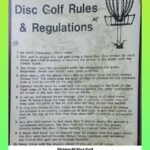Step into the fascinating history of the golf cart, an indispensable companion that has revolutionized the game of golf. From its humble beginnings as a motorized caddy to its current status as a high-tech, eco-friendly vehicle, this article, titled “Witnessing Golf’s Evolution: A Journey Through the History of the Golf Cart,” will take you on an engaging journey through the remarkable transformation of an essential element of modern-day golf. Hold on tight as we delve into the intriguing stories, innovations, and safety considerations that have shaped the golf cart’s remarkable evolution.
Key Takeaways:
In the 1930s, Lyman Beecher invented the first electric golf cart because he noticed how difficult it was for golfers to walk the course, particularly in hot weather.
J.K. Wadley is said to have come up with the concept after visiting Los Angeles in 1932, although this story is sometimes treated as folklore.
Seeking to offer a solution to dying batteries, Max Walker created the first gasoline-powered golf cart in 1957, called “The Walker Executive.”
Harley-Davidson entered the golf cart market in 1963, competing with established manufacturers like Yamaha, E-Z-GO, and Marketeer.
The popularity of golf carts soared in the 1950s as numerous manufacturers introduced creative designs and models.
History of the Golf Cart


In the realm of golf, the history of the golf cart is a fascinating tale of innovation, evolving from humble motorized caddies to the high-tech, eco-friendly vehicles we see on golf courses today. Let’s delve into the captivating evolution of this iconic golf accessory.
1930s: The Genesis of Electric Golf Carts
The journey began in the 1930s when Lyman Beecher, a Florida businessman, conceived the first electric-powered three-wheeled golf cart, driven by the desire to ease the strain of navigating golf courses, especially during sweltering weather. Beecher’s invention laid the foundation for the golf cart’s future prominence.
1950s: Gasoline-Powered Carts Enter the Scene
The 1950s witnessed a significant turning point with the introduction of gasoline-driven golf carts. Max Walker, an ingenious inventor, created “The Walker Executive,” a gasoline-powered golf cart that addressed the issue of batteries not lasting an entire round of golf. This innovation paved the way for more efficient and long-lasting golf carts.
1960s: The Proliferation of Golf Carts
The 1960s ushered in an era of widespread golf cart adoption. Esteemed manufacturers like Yamaha, E-Z-GO, and Marketeer joined the fray, introducing a diverse range of models and designs. These advancements catered to the growing demand for golf carts, transforming them from novelties into essential golf course accessories.
1970s and Beyond: Technological Advancements and Environmental Focus
The 1970s and subsequent decades were marked by continuous technological advancements in golf carts. The advent of electric golf carts with improved battery technology and performance made them a more viable and environmentally friendly option. The emphasis on sustainability further propelled the development of solar-powered and hybrid golf carts, showcasing the industry’s commitment to reducing its carbon footprint.
The Golf Cart Today: A Symbol of Progress
Today, golf carts stand as a testament to the sport’s evolution. Beyond their practical purpose of transporting golfers and their equipment, they have become symbols of progress, innovation, and environmental stewardship. The history of the golf cart is a captivating narrative of human ingenuity and adaptation, mirroring the ever-changing landscape of the game of golf itself.
Discover the fascinating history and evolution of the Korean alphabet in our comprehensive guide. History of the Korean Alphabet
Intrigued by the history of the picture frame? Delve into the captivating story of its creation and transformation over the centuries. History of the Picture Frame
Satisfy your curiosity about the Snickers candy bar’s creation and rise to prominence in the confectionery world. Explore the History of the Snickers Candy Bar.
Safety[edit]
Golf carts have become an essential part of the modern golf experience, providing convenience, accessibility, and enjoyment for golfers of all ages and abilities. However, with the increasing popularity of golf carts, safety concerns have also come into focus.
The speed and maneuverability of golf carts can pose risks to golfers, pedestrians, and course staff. To address these concerns, golf courses and regulatory bodies have implemented various safety measures and regulations.
Key Safety Considerations:
Speed Limits: Golf courses typically establish speed limits for golf carts to ensure safe operation. These limits vary depending on the course layout, traffic conditions, and pedestrian activity.
Seat Belts: Many golf carts are now equipped with seat belts to protect occupants in case of sudden stops or collisions. Seat belts are particularly important for children and passengers riding in the back of the cart.
Vehicle Maintenance: Regular maintenance is crucial for ensuring the safe operation of golf carts. This includes checking tire pressure, brakes, and steering components to ensure they are in good working condition.
Driver Education: Golf courses often offer driver education programs to educate golfers on safe golf cart operation. These programs cover topics such as speed limits, right-of-way rules, and proper etiquette.
Pedestrian Safety: Golf carts should always yield to pedestrians, and drivers should be aware of their surroundings and avoid driving too close to pedestrians or other obstacles.
Cart Path Only: Some courses designate certain areas as “cart path only” to prevent carts from damaging the course or interfering with play. Golfers should adhere to these restrictions to maintain course conditions and safety.
Key Takeaways:
Speed limits: Golf courses set speed limits to ensure safety; follow these limits and be mindful of pedestrians.
Seat belts: Use seat belts, especially for children and backseat passengers.
Maintenance: Regular maintenance is crucial for safe operation; check tires, brakes, and steering regularly.
Driver education: Take advantage of golf cart driver education programs offered by courses.
Pedestrian safety: Yield to pedestrians and be aware of your surroundings.
Cart path only: Respect “cart path only” areas to avoid course damage and maintain safety.
Sources:
- Golf Cart Safety
- Golf Cart Safety Tips
FAQ
Q1: What factors contributed to the invention of the golf cart?
A1: The invention of the golf cart was motivated by the desire to address the challenges faced by golfers in navigating the course, particularly in hot weather and on hilly terrains.
Q2: Who invented the first electric-powered golf cart and what year?
A2: Lyman Beecher, a businessman from Clearwater, Florida, invented the first electric-powered three-wheeled golf cart in the 1930s.
Q3: Which company played a significant role in the mass production of golf carts?
A3: Marketeer, founded by Merle Williams in the mid-1950s, was one of the first companies to mass-produce golf carts, contributing to the widespread adoption of these vehicles on golf courses.
Q4: When did gasoline-powered golf carts emerge, and why did they gain popularity?
A4: Gasoline-powered golf carts started to gain traction in the 1970s due to their increased power and range, providing golfers with a more efficient and convenient option compared to electric models.
Q5: How have golf carts evolved in terms of design and features over the years?
A5: Golf carts have undergone significant design and feature changes over time, including the adoption of a four-wheel standard for enhanced stability and maneuverability, as well as the introduction of innovative technologies such as GPS navigation and Bluetooth connectivity.














